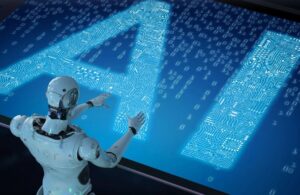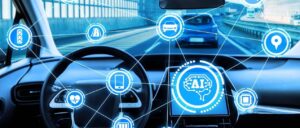AI Cars vs. Traditional Cars: What’s the Difference?
Welcome to the world of AI cars
The automobile industry has witnessed extraordinary advancements over the past century, evolving from the earliest steam-powered vehicles to today’s sophisticated cars.
Traditional vehicles have long been defined by their reliance on human drivers, internal combustion engines, and mechanical systems.
However, recent developments in artificial intelligence (AI) are pushing the boundaries of what cars can do, introducing a new era of AI cars.
These vehicles are equipped with technologies like autonomous driving, predictive analytics, and machine learning, which are transforming not only how we drive but also how we interact with our vehicles.
AI is revolutionising the driving experience, offering enhanced safety features, real-time decision-making, and even personalised driving environments.
As AI cars become increasingly prevalent, the debate around their benefits compared to traditional cars continues to grow. This article explores the key question: What are the main differences between AI cars and traditional cars?
This sets the stage for a detailed comparison, delving into aspects like safety, fuel efficiency, and overall driving experience.
What Are AI Cars?
AI cars, also known as autonomous or self-driving cars, integrate artificial intelligence to perform tasks traditionally handled by human drivers.
These vehicles use advanced algorithms, sensors, and computing power to make real-time decisions, navigate roads, and respond to changing environments.
The most prominent aspect of AI cars is their ability to operate autonomously, either partially or fully, without direct human intervention.
AI powers key systems such as self-driving features, safety mechanisms, and vehicle-to-vehicle communication, enhancing the driving experience and safety standards.
The role of AI in these vehicles extends beyond driving automation. It includes predictive maintenance, AI-driven infotainment systems, voice commands, and even real-time data analysis for optimised fuel efficiency.
AI cars can adapt to road conditions, detect obstacles, and make split-second decisions, reducing the margin for human error.
Statistics
The global market for AI cars is experiencing significant growth. According to recent reports, the autonomous vehicle market is projected to reach a value of over £600 billion by 2030.
Consumer interest is also rising; research suggests that one in four drivers is considering an AI-powered vehicle for their next purchase, with safety and convenience being the main motivators.
Major players in the automotive industry, like Tesla and Waymo, have already taken significant market shares, accelerating the adoption of AI-driven cars globally WordStream
Examples of AI cars
Here’s a list of 10 AI-powered cars and their manufacturers:
Tesla Model S / Model 3 / Model X / Model Y – Tesla
Tesla vehicles are known for their advanced Autopilot system, which includes AI-driven features for autonomous driving.BMW iX / 7 Series / 5 Series – BMW
BMW integrates AI technology in its vehicles, especially with its Personal Assistant and self-driving capabilities.Audi A8 / Q7 / A6 – Audi
Audi’s AI-driven systems feature autonomous driving features and adaptive AI-powered driver assistance.Mercedes-Benz S-Class / EQS – Mercedes-Benz
Mercedes-Benz incorporates AI in its MBUX system and advanced autonomous driving technologies.Volvo XC90 / XC60 – Volvo
Volvo cars use AI for their Pilot Assist system, which offers autonomous driving capabilities.Waymo One – Waymo (a subsidiary of Alphabet)
Waymo’s AI-powered autonomous cars are fully self-driving and used for ride-hailing services.Nissan Leaf – Nissan
The Nissan Leaf features ProPILOT AI technology for semi-autonomous driving.Lucid Air – Lucid Motors
Lucid’s luxury electric vehicle, Lucid Air, comes with AI-powered autonomous driving capabilities.Ford Mustang Mach-E / F-150 – Ford
Ford integrates AI into its Co-Pilot360 driver assistance system for semi-autonomous features.General Motors (Chevrolet Bolt EV, Cadillac LYRIQ) – GM
General Motors utilises AI with its Super Cruise hands-free driving technology in select models.
These manufacturers are leveraging AI to enhance autonomous driving, safety, and user experience.
These vehicles integrate various levels of AI, from advanced driver-assistance systems (ADAS) to full autonomy in certain conditions.
Key AI Technologies
AI cars rely on a combination of advanced technologies to function seamlessly. The most important AI technologies include:
- Machine Learning (ML): Used to process vast amounts of data from sensors and cameras, helping the vehicle understand and predict driving conditions and patterns. Machine learning enables continuous improvement, allowing the car to “learn” from every trip.
- Computer Vision: This technology helps AI cars interpret visual data from the surrounding environment. By processing inputs from cameras and LiDAR systems, the car can recognise road signs, pedestrians, vehicles, and obstacles.
- Neural Networks: AI cars use neural networks to make sense of complex data and make decisions, such as when to stop, turn, or accelerate. Neural networks allow the car to make context-driven choices, simulating human decision-making processes.
- Sensor Fusion: By integrating data from multiple sensors, AI cars can create a more accurate representation of the world around them, leading to better decision-making. This includes data from radar, cameras, and ultrasonic sensors.
Together, these technologies form the backbone of modern AI cars, enabling them to drive with increasing autonomy and safety.
How Traditional Cars Operate
Traditional cars are vehicles that rely entirely on human drivers for control and decision-making. They typically use internal combustion engines (ICE) powered by fossil fuels, such as petrol or diesel, or more recently, electric vehicles (EVs) that operate on battery power. However, unlike AI cars, traditional vehicles lack the artificial intelligence systems that assist or automate driving functions. Instead, they are driven manually, with the driver controlling all essential operations, such as acceleration, steering, and braking.
In traditional cars, the core components include mechanical systems, such as the transmission, engine, brakes, and suspension, which work together to power and control the vehicle. These cars depend heavily on the driver’s skill, attention, and reaction time to navigate roads, respond to changing traffic conditions, and ensure safe operation.
Technological Limitations
One of the main limitations of traditional cars is the absence of advanced decision-making capabilities. These vehicles rely solely on the human driver’s judgment for making crucial split-second decisions, such as avoiding obstacles, adjusting speed, and reacting to unforeseen dangers on the road.
Unlike AI cars, traditional vehicles do not have the ability to process data from their surroundings in real-time or assist the driver with predictive safety measures.
Traditional cars lack features like adaptive cruise control, autonomous emergency braking, and lane-keeping assistance, which are common in AI-powered vehicles.
The absence of such advanced systems makes traditional cars more prone to human error, which remains a leading cause of road accidents worldwide.
Additionally, traditional cars do not offer predictive maintenance, meaning owners must rely on regular inspections and post-issue repairs, whereas AI cars can alert drivers to potential issues before they become critical.
While electric vehicles represent an advancement in eco-friendliness compared to internal combustion engines, they still rely on manual driving inputs and do not possess the sophisticated AI capabilities of their autonomous counterparts.
AI Cars vs. Traditional Cars: Key Differences
Driving Control
- AI Cars: AI-powered cars are designed to offer autonomous or semi-autonomous driving, meaning they can operate with little to no input from a human driver. Using a combination of AI algorithms, sensors, and cameras, these vehicles can navigate roads, change lanes, and even park themselves. Levels of autonomy range from basic driver assistance to fully self-driving cars, such as those developed by Tesla and Waymo, where AI takes control of the vehicle, handling complex road scenarios and decision-making in real-time.
- Traditional Cars: In contrast, traditional cars are fully human-operated. The driver is responsible for all aspects of controlling the vehicle, including steering, accelerating, and braking. While some modern vehicles feature basic driver-assist technologies, the driving experience remains largely manual, dependent on the driver’s skills and reactions.
Safety Features
- AI Cars: AI cars are equipped with advanced safety features that significantly enhance the driving experience. These include technologies like real-time hazard detection, which scans the environment and alerts the driver to potential dangers, and adaptive cruise control, which maintains a safe distance from other vehicles by adjusting speed automatically. Autonomous emergency braking is another critical feature, where AI can apply the brakes to avoid a collision without human intervention. AI systems can process data faster and more accurately than human drivers, reducing the risk of accidents.
- Traditional Cars: Traditional vehicles, on the other hand, come with standard safety systems like seatbelts, airbags, and anti-lock brakes, but lack the sophisticated AI-based safety technologies. Drivers must rely on manual reactions to avoid hazards, which introduces a greater risk of human error. Features like emergency braking or collision detection require human input, often leaving little room for error in dangerous situations.
Fuel Efficiency and Sustainability
- AI Cars: AI technology allows for optimised fuel and energy management, particularly in electric vehicles (EVs). AI systems can analyse driving patterns and adjust the car’s energy consumption to improve efficiency, especially in stop-and-go traffic or on long-distance drives. AI-powered vehicles are typically designed with environmental sustainability in mind, leveraging AI to monitor and reduce carbon footprints, making them more energy-efficient compared to their traditional counterparts.
- Traditional Cars: Fuel consumption in traditional cars depends mainly on mechanical design and the driver’s habits. While newer models may offer improved fuel efficiency, they lack the AI-powered features that optimise energy use in real-time. Traditional cars often rely on the driver’s ability to conserve fuel through efficient driving techniques, and the vehicle’s performance may degrade over time without the benefit of AI-assisted monitoring.
Maintenance and Diagnostics
- AI Cars: One of the key advantages of AI cars is their predictive maintenance capabilities. AI systems constantly monitor the car’s components and performance, alerting drivers to potential issues before they become serious. For example, AI can detect when a part is wearing down or when the vehicle requires a software update, allowing for proactive maintenance. This reduces downtime, extends the lifespan of the vehicle, and minimises repair costs.
- Traditional Cars: Traditional vehicles rely on scheduled servicing and reactive maintenance, where issues are often only addressed after they arise. Drivers must follow manual service schedules and rely on mechanic inspections to identify potential problems. This approach can lead to more frequent breakdowns or costly repairs if issues go unnoticed for too long.
Driver Experience
- AI Cars: AI-powered vehicles offer a personalised and enhanced driving experience. Features like AI-based infotainment systems, voice commands, and real-time driving assistance improve convenience and user satisfaction. AI can adapt to a driver’s preferences, adjusting everything from seat position to preferred routes, and even learning driving habits to offer suggestions. The ability to take over driving functions also reduces fatigue, making long-distance travel more comfortable.
- Traditional Cars: The driver experience in traditional cars is entirely dependent on the driver’s skill and attentiveness. While many traditional vehicles offer modern conveniences like touchscreen displays and voice control, they lack the adaptive and learning capabilities of AI systems. As a result, the driving experience in traditional cars remains less intuitive, requiring constant attention and effort from the driver.
These comparisons highlight how AI cars represent a significant leap in terms of driving control, safety, efficiency, and overall experience compared to traditional cars.
AI technology provides enhanced automation and decision-making capabilities that greatly reduce the reliance on human input, whereas traditional cars remain dependent on the driver’s skill and attentiveness for safe and efficient operation.
Advantages of AI Cars
Enhanced Road Safety
One of the most significant advantages of AI cars is their ability to dramatically improve road safety. AI cars use technologies like real-time hazard detection, lane-keeping assistance, and adaptive cruise control to reduce the risk of accidents.
These systems continuously monitor the environment, allowing AI to react faster and more accurately than human drivers.
Features such as autonomous emergency braking and collision avoidance ensure that the vehicle can take action to prevent accidents even when the driver is distracted or unable to respond in time.
Studies have shown that human error is responsible for over 90% of road accidents, meaning AI cars have the potential to significantly lower accident rates by removing or reducing the human element in driving decisions.
Reduced Driver Fatigue with Autonomous Driving Features
AI cars are equipped with autonomous or semi-autonomous driving features that can take over driving tasks, reducing the burden on the driver.
This is particularly useful during long-distance travel or in congested traffic, where maintaining focus can be exhausting.
Features like Tesla’s Autopilot or Waymo’s full autonomy allow drivers to sit back and let the car manage most of the driving, reducing stress and fatigue.
By minimising the need for constant attention, AI cars offer a more relaxed driving experience, enabling drivers to arrive at their destinations feeling more refreshed.
Optimised Energy Efficiency, Especially in Electric Vehicles
AI technology allows cars to achieve optimised fuel and energy efficiency, particularly in electric vehicles (EVs).
AI can manage energy consumption by adjusting driving habits based on road conditions, traffic patterns, and real-time data analysis.
For example, AI can optimise battery use by regenerating energy during braking or choosing the most efficient routes to reduce energy waste. This not only extends the range of electric vehicles but also contributes to reducing the vehicle’s environmental footprint.
As governments and consumers push for more sustainable transport options, AI cars stand out as a solution to enhance energy efficiency and promote greener driving practices.
These advantages position AI cars as a transformative force in the automotive industry, offering safer, more efficient, and less stressful driving experiences.
Challenges Faced by AI Cars
Legal and Ethical Concerns
One of the most pressing challenges faced by AI cars is the legal and ethical landscape surrounding autonomous driving. While the technology is advancing rapidly, the regulatory framework is struggling to keep pace.
Many countries lack clear laws governing the use of AI-powered cars, particularly when it comes to assigning responsibility in the event of an accident.
For instance, if an AI-driven car causes a collision, should the fault lie with the manufacturer, the software developer, or the car owner? This uncertainty creates significant legal hurdles for the widespread adoption of AI cars.
In addition to legal concerns, there are ethical dilemmas surrounding the decision-making capabilities of AI.
Autonomous vehicles are often programmed to prioritise safety, but in unavoidable accident scenarios, AI systems may have to make complex ethical decisions, such as choosing between the safety of the passengers and pedestrians.
These “moral dilemmas” in split-second decision-making raise concerns about the programming of AI cars and the ethical responsibilities of developers and manufacturers.
High Initial Costs
Despite the long-term benefits of AI cars, the initial cost of acquiring such vehicles remains a significant barrier for most consumers.
AI cars are often packed with advanced sensors, LiDAR, cameras, and complex computing systems, all of which contribute to their high production costs.
For example, vehicles like Tesla’s Full Self-Driving (FSD) feature can add thousands of pounds to the price of a car.
This makes AI cars less accessible to the average consumer, limiting their market penetration to affluent buyers or fleet operators like ride-sharing companies.
Furthermore, the cost of maintaining and repairing AI cars is also higher than traditional vehicles.
The complexity of the systems means that any repairs require specialised knowledge and expensive parts, further increasing the total cost of ownership.
The Complexity of Achieving Full Autonomy
While AI cars have made significant strides in semi-autonomous driving, achieving full autonomy—where a car can operate without any human intervention—remains a major challenge.
AI cars must be able to navigate an ever-changing environment, handle complex traffic conditions, and interpret unpredictable human behaviour on the road.
For instance, distinguishing between a pedestrian intending to cross the street and one who is standing still is a nuanced task that human drivers can often do effortlessly, but AI systems still struggle with this level of contextual understanding.
Moreover, ensuring that AI cars can safely operate in diverse weather conditions, such as heavy rain, snow, or fog, adds further complexity.
The integration of robust sensors and AI algorithms that can reliably handle these conditions is still in development.
Achieving full autonomy will require not just technological advancements but also significant infrastructure upgrades, such as the development of smart cities and improved road systems to accommodate autonomous vehicles.
These challenges illustrate that while AI cars offer remarkable potential, the journey toward full autonomy and mass adoption will require overcoming significant legal, financial, and technological hurdles.
Will AI Cars Replace Traditional Cars?
The question of whether AI cars will completely replace traditional vehicles is a complex one, with experts divided on whether full domination of the market is likely, or if AI-enabled and human-operated vehicles will coexist for the foreseeable future. While AI products such as cars present significant advantages in terms of safety, energy efficiency, and convenience, the path to widespread adoption faces several hurdles.
Coexistence or Domination?
In the near future, it is more likely that AI cars will coexist with traditional vehicles rather than replace them entirely. There are a few reasons for this:
- High Cost and Accessibility: As previously discussed, the high cost of AI cars limits their accessibility for many consumers. While the technology is expected to become more affordable over time, traditional vehicles will continue to serve as a more cost-effective option for many, particularly in regions where economic constraints play a significant role in vehicle ownership decisions.
- Infrastructure Development: The full integration of AI cars into road systems will require significant infrastructure upgrades, such as the implementation of smart roads with vehicle-to-infrastructure (V2I) communication. This transformation is expected to take years, if not decades, to be fully realised in many parts of the world. Until then, AI cars will have to share roads with traditional vehicles, operating in a hybrid system where both human drivers and autonomous cars coexist.
- Cultural and Psychological Factors: Many people still prefer the hands-on experience of driving, and there are cultural and emotional connections to traditional cars that AI vehicles may not easily replace. Driving enthusiasts, in particular, may be resistant to fully giving up control to AI. Additionally, the trust in fully autonomous vehicles is still developing, and widespread acceptance will likely take time as the technology continues to prove itself.
Future Road Systems
Several potential scenarios for future road systems exist, each representing different levels of AI car integration:
- Mixed Road Systems: In the short-to-medium term, a hybrid model is likely to emerge, where AI-powered vehicles share the roads with traditional cars. Roads will need to be adapted to cater to both types of vehicles, including clearer markings for AI sensors and segregated lanes for autonomous driving in some urban areas.
- Smart City Integration: As cities evolve into smart cities, we may see road systems designed specifically for AI cars, with advanced traffic management systems that communicate directly with vehicles. Such systems would manage traffic flow, reduce congestion, and prioritise safety by coordinating vehicle movement in real-time, potentially relegating traditional cars to secondary or rural routes where autonomy is less critical.
- Fully Autonomous Zones: Eventually, fully autonomous zones may emerge in select urban areas, where only AI cars are allowed to operate. These zones could be particularly useful in city centres where traffic, safety, and environmental concerns are paramount. In these areas, traditional vehicles might be restricted or banned entirely, allowing AI cars to operate with full efficiency and safety.
In summary, while AI cars are poised to play a significant role in the future of driving, they are unlikely to completely replace traditional cars in the short term. Instead, we are more likely to see a period of coexistence as both technologies continue to serve different needs and preferences.
The pace of adoption will depend on advancements in AI, infrastructure improvements, cost reductions, and societal acceptance of autonomous vehicles.
Conclusion
In comparing AI cars to traditional cars, the key differences lie in their driving control, safety features, fuel efficiency, maintenance, and overall driving experience. AI cars offer autonomous driving, advanced safety systems, and optimised energy management, while traditional cars rely entirely on human control and mechanical design for fuel efficiency and safety.
AI cars can monitor their surroundings in real-time, predicting potential issues and responding accordingly, whereas traditional vehicles require constant driver attention and are prone to human error.
The potential of AI technology to transform the automotive industry is undeniable. From enhanced road safety to reduced driver fatigue and improved energy efficiency, AI is reshaping what it means to travel. As the technology continues to evolve, it promises to deliver smarter, more intuitive vehicles that can minimise accidents and improve traffic management.
Looking ahead, the future of driving is likely to feature AI-powered vehicles playing an increasingly dominant role. While traditional cars will coexist for some time, the steady progression of autonomous driving systems suggests that AI vehicles will gradually take over, making roads safer and more efficient.
The evolution of AI cars marks the beginning of a new era in automotive history—one where the driving experience is not just about getting from A to B, but doing so smarter, safer, and with greater ease than ever before.




















